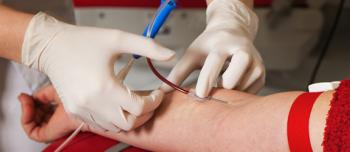Investigators from the Centers for Disease Control and Prevention (CDC) in Atlanta published a paper in April 2010 describing the potential blood safety threats posed by existing and emerging pathogens. The article focuses on risks to patients who take like-saving blood products, including people with bleeding and clotting disorders and those with hemoglobinopathies, disorders resulting from deficiencies in hemoglobin, an oxygen-carrying protein in the blood. The lead author of the paper was Sean R. Trimble, MPH, of the CDC’s Division of Blood Disorders, National Center on Birth Defects and Developmental Disabilities.
The authors acknowledged that the safety of blood products has improved significantly due to enhancements in blood banking, donor screening and viral inactivation methods. However, some viral pathogens that have existed for decades, including the hepatitis viruses and the human immunodeficiency virus (HIV), still pose a threat. Risk to the overall population from these viruses “persist” in part, according to the authors, because of the so-called window period between the time of infection and detection.
Due to the incorporation of stringent donor screening measures and improved viral eradication methods into the plasma-product manufacturing process, there have been no reported cases of HIV transmission through factor concentrates used to treat bleeding disorders since 1986. In addition, there have been no reported cases of hepatitis C for nearly two decades.
The authors profiled other viral pathogens, including West Nile virus, cytomegalovirus and parvovirus B19. Parvovirus B19 is a small DNA virus that, in studies, has been shown to be resistant to common inactivation methods. It can be transmitted by certain blood components and plasma derivatives. However, disease transmission of the virus by transfusion is rare. The virus causes “fifth disease,” a mild illness that may cause rash, joint pain and swelling. It is pervasive, infecting up to 50% of the population by the age of 15 years old.
“This prevalence, combined with its small size, which makes filtration difficult, and its resistance to inactivation by available viracidal processes, has led to the transmission of Parvovirus B19 by plasma-derived factor replacement products used to treat hemophilia. Although use of plasma-derived factor has been greatly reduced, Parvovirus B19 has been found in recombinant (non–plasma-derived) factor VIII products as well, most likely introduced by the albumin used as a stabilizer,” explained the authors. They stressed that continued surveillance and studies are needed to reduce the risk to blood products.
Emerging pathogens, such as variant Creutzfeldt-Jakob disease (vCJD), were also profiled. vCJD is the human form of “mad cow disease” (bovine spongiform encephalopathy, BSE). It is characterized by misshapen prion proteins that form spongelike holes in the brain tissue, causing degenerative brain disease, which results in death. The majority of vCJD cases in humans occurred during an outbreak in the United Kingdom (UK) in the 1990s, when people ate beef contaminated with BSE. There have been five confirmed cases in the UK of patients contracting the virus through contaminated blood.
The authors stressed that vCJD should continue to be a surveillance priority since there is no specific or sensitive screening test. They also described two surveillance systems that monitor blood product safety for people with blood disorders: the CDC’s Universal Data Collection (UDC) Project and the Thalassemia Data and Blood Specimen Collection (TDC).
The article, “Assessing Emerging Infectious Threats to Blood Safety for the Blood Disorders Community,” was published in the April 2010 issue of the American Journal of Preventive Medicine.





